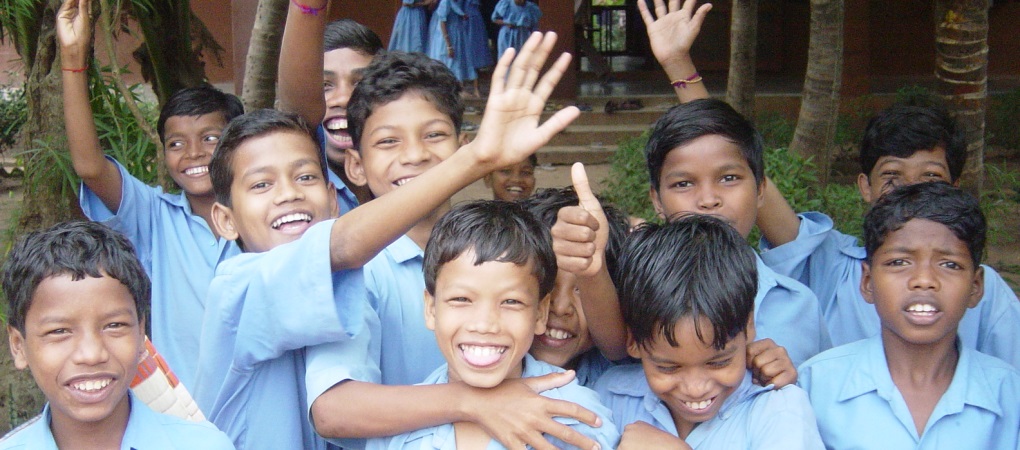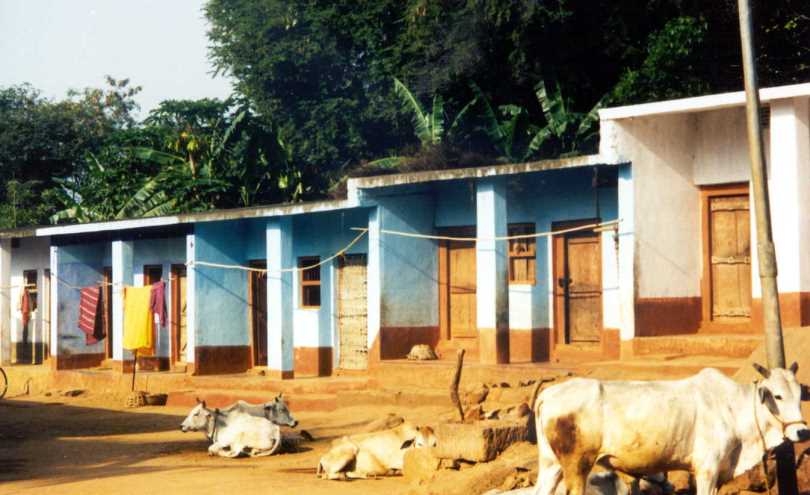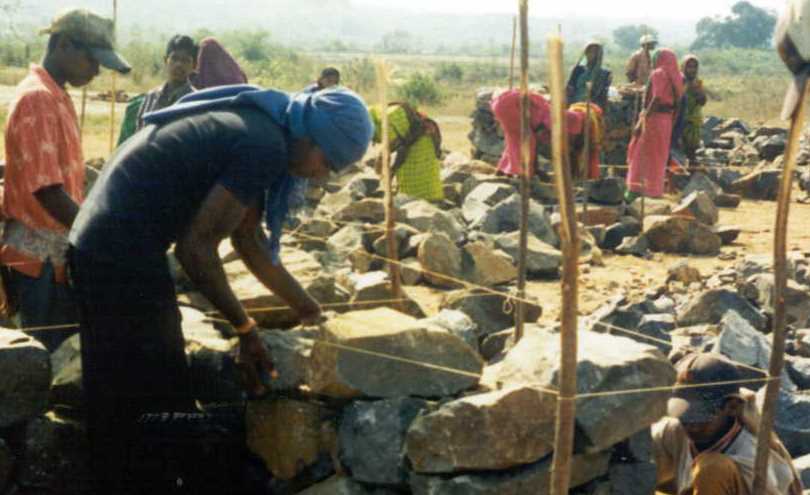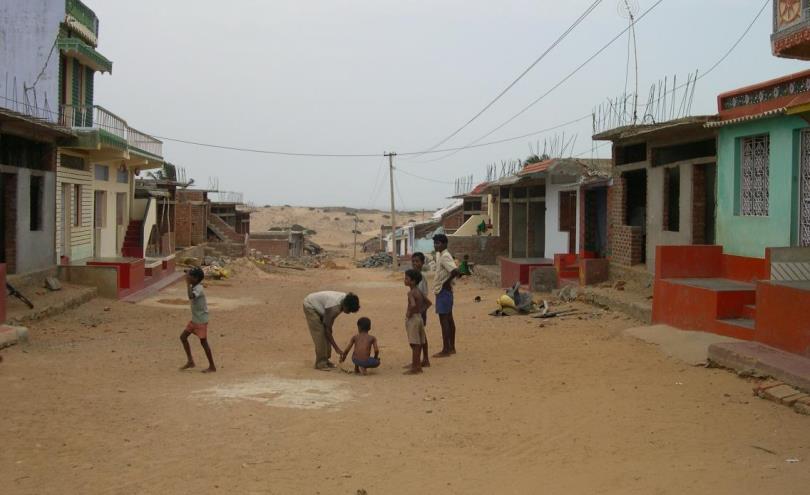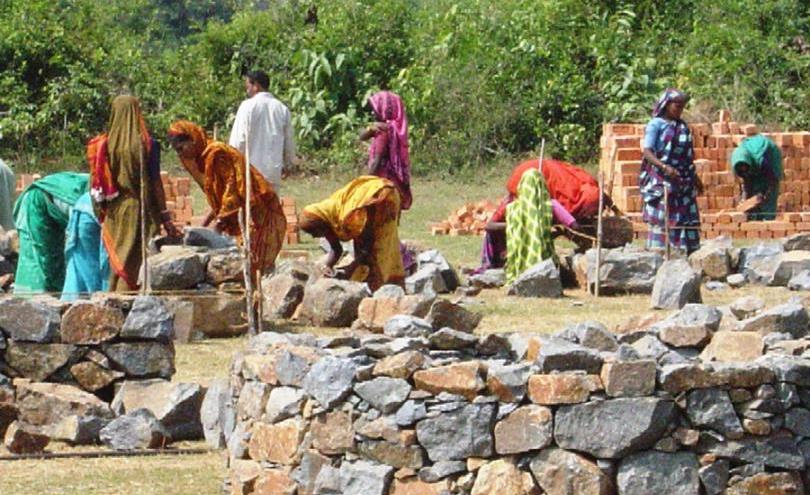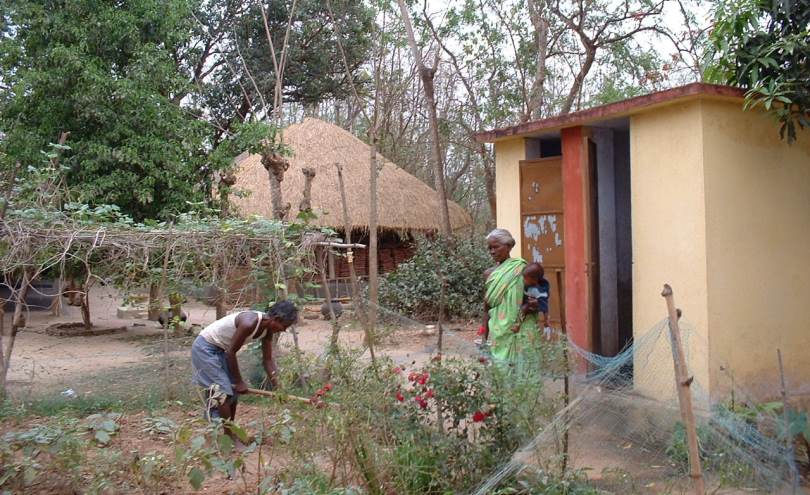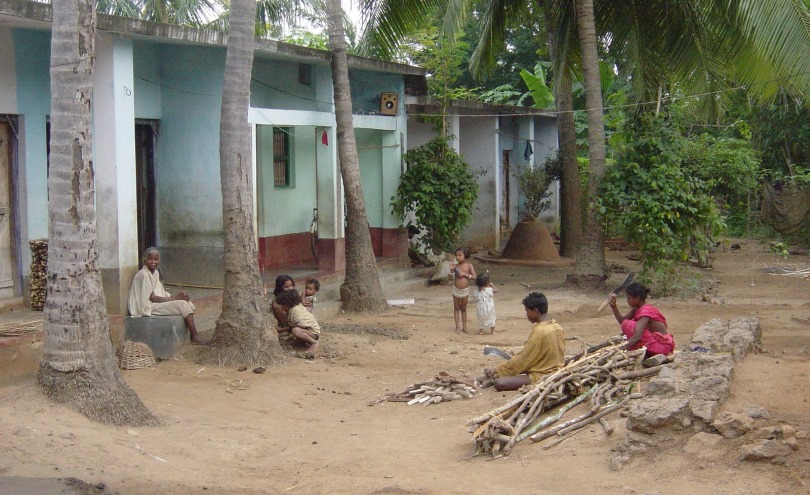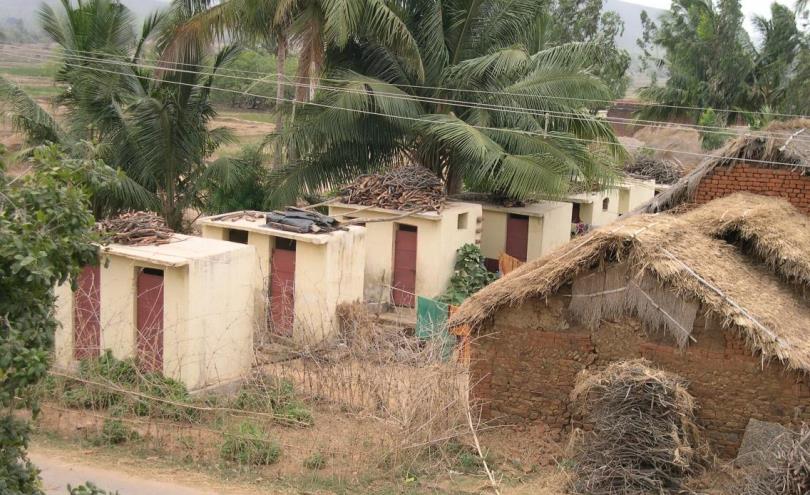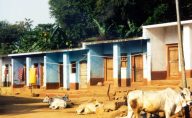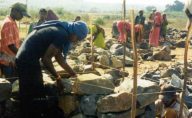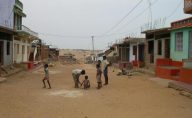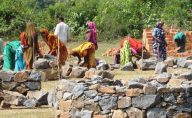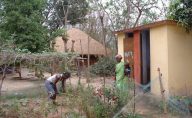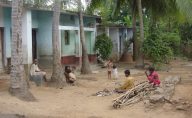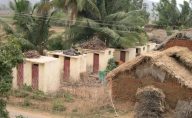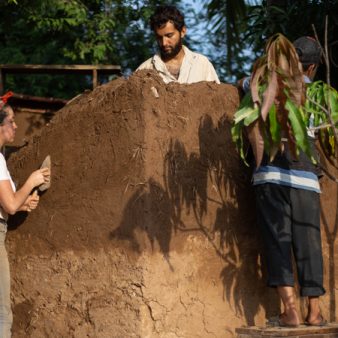Project Description
Aims and Objectives
This programme successfully demonstrates how rural communities can be involved in the sustainable and affordable development of their own village infrastructure and housing. It aims to enable a critical mass of poor and marginalised people in the rural areas of the state of Orissa to empower themselves to achieve a better quality of life characterised by:
- food security and access to secured livelihood opportunities;
- assured access to basic education and adequate health services;
- sustainable use and management of natural resources;
- options for appropriate family and community infrastructure and sources of energy;
- strong self-governing people’s institutions with equal participation of men and women;
- increased self reliance, self-esteem and political awareness.
Located on the eastern coastline of India, Orissa is one of the poorest states of the country. The average per capita income is 73 per cent of the national average, with 40 per cent of its population (about 17.5 million persons) living below the national poverty line. Almost 90 per cent of Orissa’s population live in rural areas, of whom less than 20 per cent have access to protected water and less than one per cent to a piped water supply. Less than five per cent have access to sanitation.
The Rural Health and Environment Programme (RHEP) is being implemented by Gram Vikas (GV), an NGO established in 1979 to bring development opportunities to the poor and marginalised sectors of the rural population of Orissa. Gram Vikas initiated the RHEP in 1991 to address the fact that there was widespread illness and death in the region caused by waterborne disease. Through this programme Gram Vikas works together with the entire community to provide clean water and sanitation for the village, as well as promoting a range of income generation and other community development projects. The distinctive feature of this programme is that it involves every family in the village without exception and the initiation of the programme is subject to the generation of a Corpus Fund to which very household contributes. Institutional and financial sustainability are the cornerstones of the programme which seeks to empower village communities to manage the development processes and to enable Gram Vikas to withdraw in a defined period of time.
One hundred and five villages and over 8,000 households have now been covered by the programme which started in 1992, with five villages and 337 households. It is continually expanding as more and more villages wish to carry out similar work.
The construction of disaster-proof housing was initiated in the mid 1980s after a cyclone destroyed many poorer areas of Orissa. From 1992 onward, the construction of houses was only undertaken in villages which demonstrated the ability to work together in the water and sanitation projects. Gram Vikas’ aim is to identify the most vulnerable families in all villages who have completed the water and sanitation project and help them build disaster-proof housing through providing financial and technical support.
To date, Gram Vikas has supported the construction of 3,625 houses in 170 villages and another 767 houses are under construction. Loans of over Rs 70 million (US$1.6 million) have been disbursed. For the villagers building and living in a permanent, disaster-proof, spacious and comfortable home is a matter of great pride and dignity.
With an area of 41 m² the houses are much larger than the typical rural dwellings of 10 m². They include two multi-use rooms, a kitchen and veranda. The cost of this dwelling is Rs 45,000 (US$1,034), with the household contributing 30 per cent of the cost through their labour and local materials and an initial deposit of Rs 3,000 – 5,000 (US$69 – 115). The remaining 70 per cent is facilitated by Gram Vikas as a soft loan from the Housing Development and Finance Corporation, drawing on a credit line from KfW in Germany. The loan is repayable by the household over 15 years at a nine per cent interest rate. The repayments go into a revolving fund to finance work in additional villages. The housing programme is linked with livelihood promotion activities to improve the income and food security of the families. The financing of this housing programme has changed since it began in 1991, from a full grant approach to a full loan approach, with the entire cost of the house now being met by the family.
A range of construction materials are used for the dwellings, primarily stone or locally-made bricks. Local masons have been trained to use innovative masonry bonds which are 30 per cent more resource efficient than conventional brick masonry. Filler slab roofs save on concrete by substituting locally-available cheap filler material. The vertical shaft brick kiln has been developed for local use and is 30 per cent more effective than the commonly found brick kilns and 50 per cent more effective than the local clamps.
It is the women in the community who benefit most from the improved water supply since they no longer need to spend hours a day fetching and carrying water and can also bathe in clean water in the privacy of their own home, rather than having to use the polluted village pond. They also benefit from their involvement in the decision making processes, gaining confidence as well as enhanced status in their village.
The programme has prompted the villagers to raise their hopes and expectations and give them confidence to move ahead in life and come out of the cycle of poverty. This is reflected in the marked increase in the school attendance in RHEP villages and in the creation of Village Health Committees that monitor children’s health on a regular basis.
The total spent in the Rural Health and Environment Programme from 1992 – 2001 on providing toilets, bathing rooms, water tanks, water supply systems, compost tanks, community halls and drainage is US$1 million. Sixty-six per cent of this cost was met by Gram Vikas using primarily donor funds, 32 per cent by households and two per cent by the government. The on-going maintenance and running costs are met by the villagers themselves and these costs are approximately US$12.5 per household per year, covering electricity bills, repairs and maintenance of pumps and the salary of the pump operator.
Why is it innovative?
- Ability to motivate the community to create assets locally in the form of physical, financial, social and community capital. nvolvement of all villagers before the programme is implemented.
- Important role taken by women in the programme
- Involvement of all villagers before the programme is implemented.
- Partnership between Gram Vikas and the villagers in carrying out the programme.
- Self-sufficient funding mechanisms.
- Encouragement of programme replication.
- Regular internal and external monitoring is carried out to provide critical feedback on approaches and strategies used.
What is the environmental impact?
Improvements made in the infrastructure services, particularly sanitation and provision of water supply have resulted in general improvement of the physical environment. The materials used to construct houses are locally-produced and more resource-efficient. Social forestry programmes have also been successful in regenerating derelict areas of land.
Is it financially sustainable?
Seed capital comes from external development agencies and in case this ever comes to cease, Gram Vikas keeps a reserve that it has collected from the biogas programme (implemented from 1983 – 1993) and also through providing training to various NGOs and government officials. Increasingly government funding is also leveraged to facilitate the water and sanitation projects. A pre-requisite of the programme is that each family contributes an average of US$25 (Rs 1,000) to a common fund known as the Corpus Fund. This gives a sense of enhanced village unity as all families are shareholders in the fund as well as providing financial security, as it can be used as collateral to raise loans from local banks.
Villagers are encouraged to develop common lands and undertake community income generation activities such as fish farming and social forestry. Costs are clearly defined and shared out between Gram Vikas and the villagers.
What is the social impact?
Involvement of the villagers in each stage of project implementation has led to increased community cohesion and the villagers are now more confident in taking part in the decision-making process. Villagers come together not only to raise the necessary finances for the project but also for joint decision-making, initially with respect to water facilities, but eventually for all other decisions within the community. Women have taken the lead in ensuring that the programme is completed on time and the project continues after Gram Vikas withdraws. A Village Executive Committee is formed legally and this entitles the village to access government funding for rural areas.
Evaluation
A preliminary survey showed that the RHEP programme was gaining momentum due to several factors. One of these was the ‘demonstration effect.’ Villages adjacent to RHEP villages have expressed a desire to implement the programme in their own villages. A second factor was inter-village marriage, with more and more families wanting to marry their daughters into villages with drinking water and toilet facilities. It was however proving difficult to encourage girls to marry into a family that did not have these facilities. The demand from panchayats (elected village councils) and politicians was another factor in encouraging the transfer of the programme through the region.
As a result of the programme, there has also been a positive impact on health due to the eradication of water-borne diseases and an overall improvement in nutrition levels, since the easy availability of water enables green vegetables to be grown in the small gardens. A reduction in gynaecological and reproductive health problems has been noted now that women have a private space to bathe and a clean water supply. There has also been a drastic reduction in the incidence of skin diseases, again due to the provision of clean water.
There has also been a marked increase in school attendance in RHEP villages and an increased demand by villagers for better services. In some cases villagers have taken to encouraging existing health workers and teachers to provide better services and Village Health Centres have been established to monitor children’s health on a regular basis. Villagers have also taken responsibility for repairing and renovating schools and providing materials.
On 22nd of March 2006, Gram Vikas was awarded the Kyoto World Water Prize at the 4th World Water Forum held in Mexico. The prize aims to honour a distinguished individual or organisation whose grass-root level activities work towards addressing critical water needs of communities and regions.
Partnership
NGO, local community, regional government

